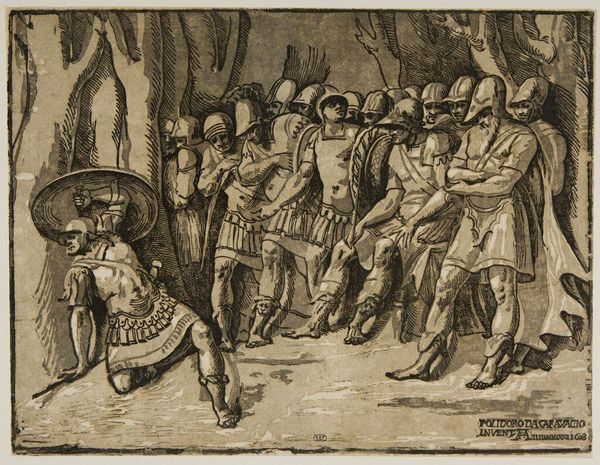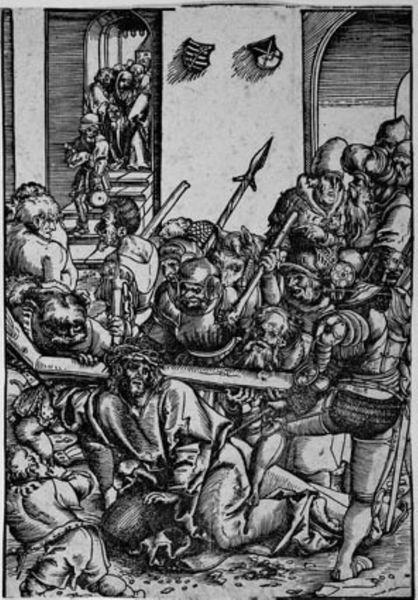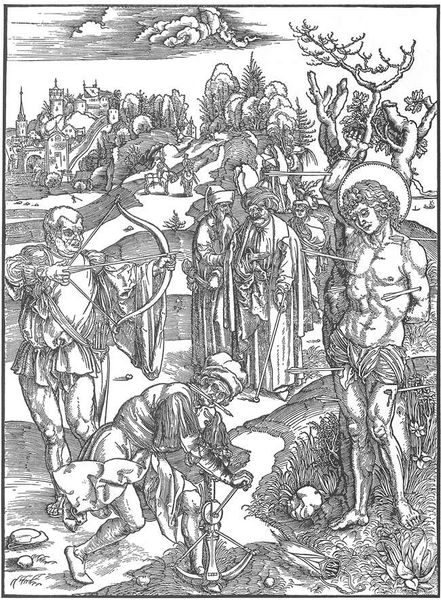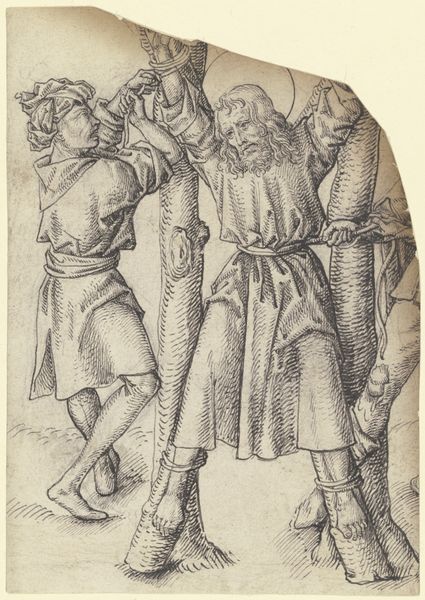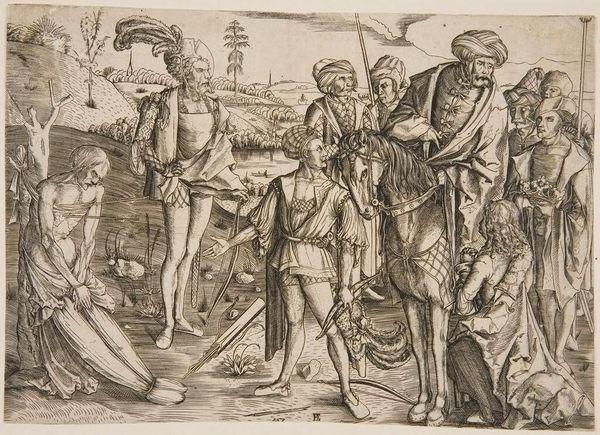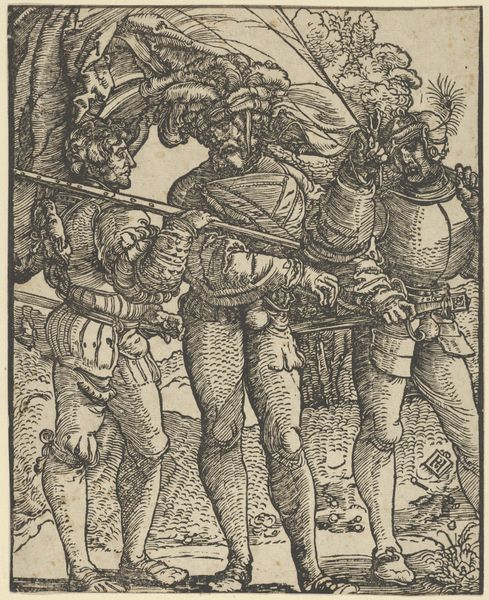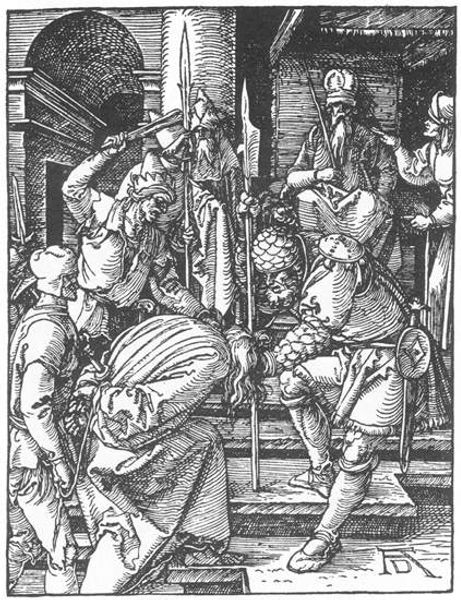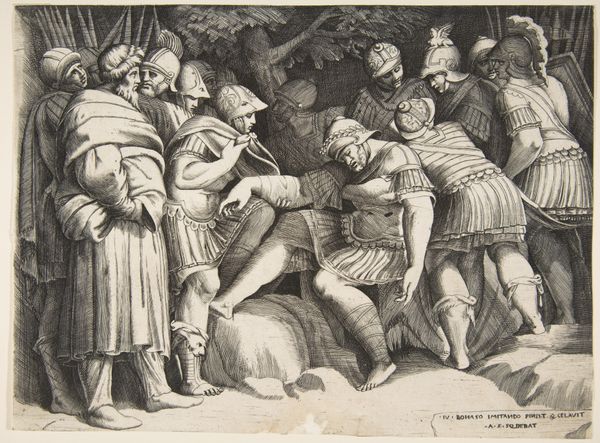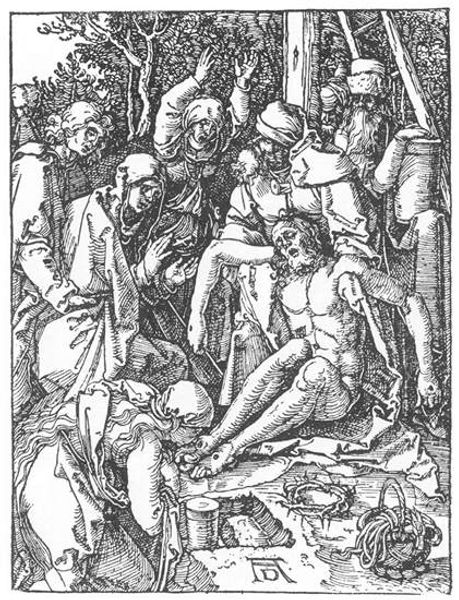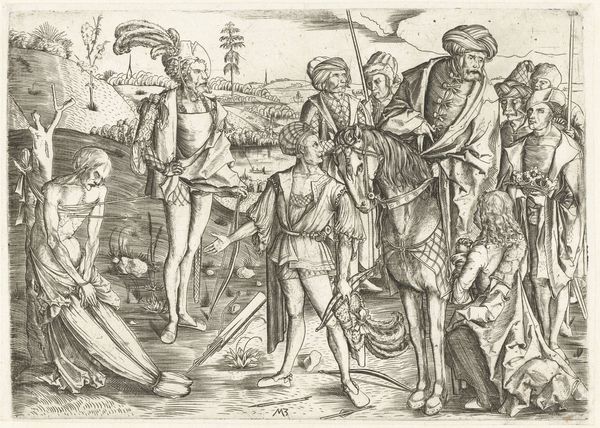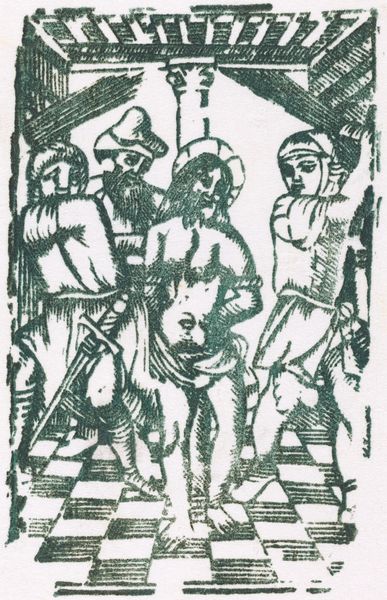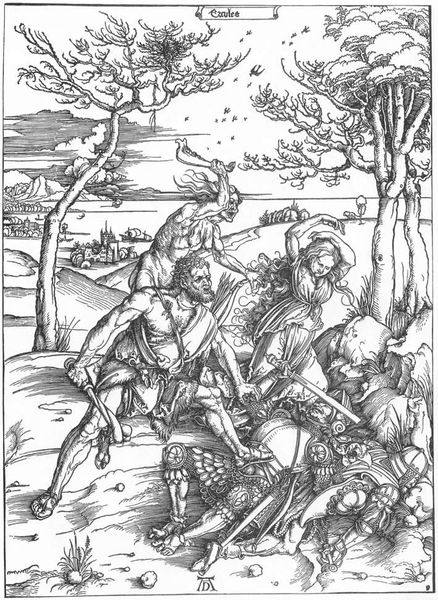
Joseph's cup found in Benjamin's sack from the biblical story of Joseph (Genesis 44); a scene with soldiers, mules and various figures 1515 - 1525
0:00
0:00
drawing, print, engraving
#
drawing
# print
#
11_renaissance
#
history-painting
#
engraving
Dimensions: Sheet (Trimmed): 6 7/8 in. × 11 in. (17.5 × 28 cm)
Copyright: Public Domain
Curator: The emotional weight in this piece is quite striking. Look at the tension etched on each figure’s face as they react to this accusatory search. Editor: This is "Joseph's cup found in Benjamin's sack from the biblical story of Joseph (Genesis 44); a scene with soldiers, mules and various figures", an engraving from around 1515 to 1525 by Giovanni Antonio da Brescia, now housed at the Metropolitan Museum of Art. I am intrigued by the ways in which the artist uses simple engraved lines to generate a powerful, believable scene. Curator: And consider the material process, itself. An engraving – transferring this potent narrative to a reproducible form. Each impression would carry this drama to a potentially vast audience, disseminating both the biblical story and, in effect, Brescia's artistic skill. Editor: Absolutely. This piece gains further meaning when we contextualize the explosion of printmaking during the Renaissance and the reformation, the shift towards accessible imagery shaping not just art, but also politics and religion across Europe. Engravings offered visual narratives to people of varying literacy levels. Curator: Indeed. The relatively cheap reproducibility means that people other than the very rich and powerful were able to start decorating their homes and interacting with artwork that carried with it socio-cultural baggage, such as this piece that could potentially signal cultural value to those in the household. Editor: The composition really highlights this moment of dramatic irony. Joseph's brothers appear so earnest and shocked, completely oblivious of their looming punishment or, worse, a revelation regarding identity. The meticulous engraving details, and the very act of replicating these emotional expressions, suggest the emergence of new, very deliberate engagement in art, where image became closely entwined with audience reception. Curator: Even today, the contrast of black and white amplifies the moment's drama; think of the economics inherent to limited artistic color during the historical moment and how those considerations affect the work itself! This narrative, crafted with simple engraved lines, speaks volumes on its artistic skill. Editor: Reflecting on this piece now, it’s clear how deeply enmeshed this artwork is within a web of cultural and social conditions, shaping and shaped by them at the same time. Curator: Right, viewing it with the material choices and the dissemination of narrative content, the print participates in social transformation even in its making, use, and trade.
Comments
No comments
Be the first to comment and join the conversation on the ultimate creative platform.

